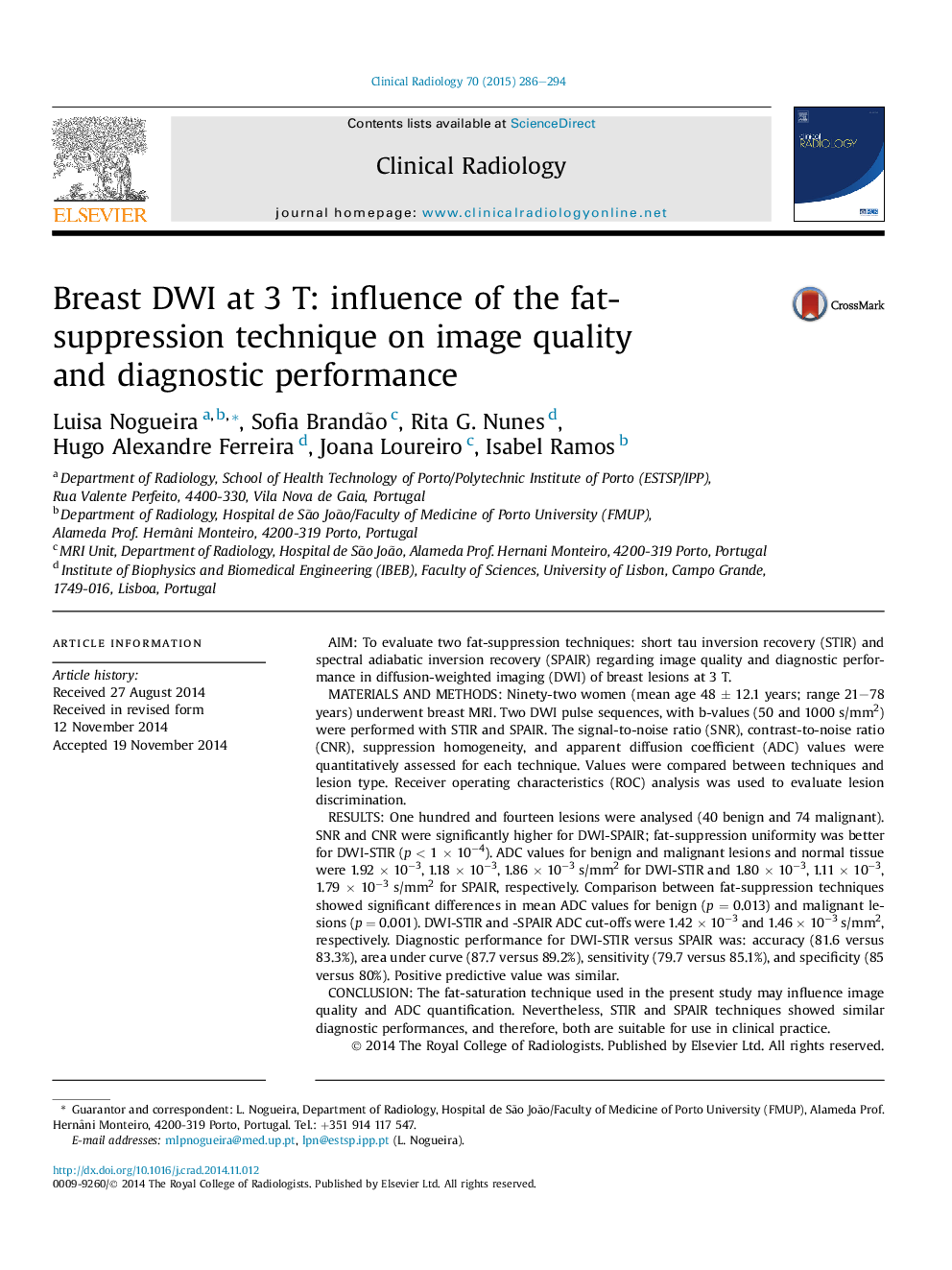| Article ID | Journal | Published Year | Pages | File Type |
|---|---|---|---|---|
| 3981584 | Clinical Radiology | 2015 | 9 Pages |
AimTo evaluate two fat-suppression techniques: short tau inversion recovery (STIR) and spectral adiabatic inversion recovery (SPAIR) regarding image quality and diagnostic performance in diffusion-weighted imaging (DWI) of breast lesions at 3 T.Materials and methodsNinety-two women (mean age 48 ± 12.1 years; range 21–78 years) underwent breast MRI. Two DWI pulse sequences, with b-values (50 and 1000 s/mm2) were performed with STIR and SPAIR. The signal-to-noise ratio (SNR), contrast-to-noise ratio (CNR), suppression homogeneity, and apparent diffusion coefficient (ADC) values were quantitatively assessed for each technique. Values were compared between techniques and lesion type. Receiver operating characteristics (ROC) analysis was used to evaluate lesion discrimination.ResultsOne hundred and fourteen lesions were analysed (40 benign and 74 malignant). SNR and CNR were significantly higher for DWI-SPAIR; fat-suppression uniformity was better for DWI-STIR (p < 1 × 10−4). ADC values for benign and malignant lesions and normal tissue were 1.92 × 10−3, 1.18 × 10−3, 1.86 × 10−3 s/mm2 for DWI-STIR and 1.80 × 10−3, 1.11 × 10−3, 1.79 × 10−3 s/mm2 for SPAIR, respectively. Comparison between fat-suppression techniques showed significant differences in mean ADC values for benign (p = 0.013) and malignant lesions (p = 0.001). DWI-STIR and -SPAIR ADC cut-offs were 1.42 × 10−3 and 1.46 × 10−3 s/mm2, respectively. Diagnostic performance for DWI-STIR versus SPAIR was: accuracy (81.6 versus 83.3%), area under curve (87.7 versus 89.2%), sensitivity (79.7 versus 85.1%), and specificity (85 versus 80%). Positive predictive value was similar.ConclusionThe fat-saturation technique used in the present study may influence image quality and ADC quantification. Nevertheless, STIR and SPAIR techniques showed similar diagnostic performances, and therefore, both are suitable for use in clinical practice.
